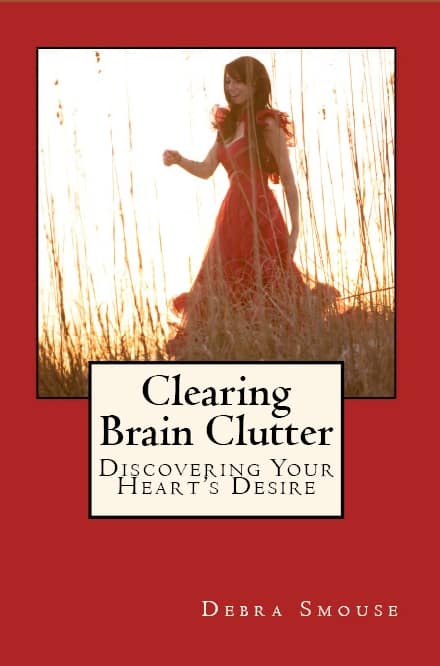One of the biggest challenges to loving my life is my own thoughts. One moment, I’m feeling on-top of the world, and then suddenly feel overwhelmed thanks to swirling thoughts that soon become brain clutter. You know exactly what I’m talking about, right? I begin thinking about everything that needs to get done that day. And it soon snowballs into worries, random challenges clients are facing, and what we’re doing next January. That’s when I know it’s time to turn to the number one tool for clearing clutter from your mind: taking pen to paper.
If you were to first ask me the no-frills path for clearing clutter from your mind, I’d tell you it’s the Brain Dump.
I first read about doing a brain dump when I read Getting Things Done by David Allen. It’s a book I still re-read on a regular basis. And his reminder “Your mind is for having ideas, not holding them.” is one of those quotes I return to time and again. Again, because it’s true. When you feel overwhelmed, you must find a way of clearing the clutter from your mind.
I reference brain dumps in many of my articles about brain clutter and there’s a reason why. It works. Because getting everything out of your head and onto paper provides your brain with much needed relief. There’s an almost alchemical process that happens when you take those swirling thoughts and put them down in black and white.
Here’s the basics on how to do a brain dump for clearing clutter from your mind:
-
- Grab a pen and either a stack of index cards or paper.
- Set a timer for five minutes.
- Write down every single thought onto the page and keep writing. If you are using index cards, write only one thought per card.
- While you are writing, do not self-edit. Remember, that this is just for you and no one else.
- Write until the timer goes off.
What you do after a brain dump is up to you. Personally, I use index cards and then sort them into categories. Then, I create a more powerful to do list. And joyfully tear up those thoughts that aren’t helpful or useful.
Time and again, I am reminded that writing things down helps you prioritize, clarify thinking, and accomplish your most important tasks, over urgent busy work. And it’s the best way to clear your thoughts and organize your ideas.
A brain dump isn’t the only way to use pen and paper for clearing clutter from your mind. You can also keep a journal.
Though I love a good brain dump to process swirling thoughts, I realize that putting thoughts on paper for no one but ourselves has been around for ages. Successful people throughout history have kept journals. There’s a reason why folks like Mark Twain, Ludwig van Beethoven, Leonardo da Vinci, Marie Curie, Anais Nin, and Maya Angelou (to name a few) kept journals.
Though some of their private journals have since been published, that wasn’t the purpose for keeping then. Like you and me, they needed a process for thinking out-loud in a way that allowed them to clear their minds. And then later process their thoughts. Keeping a journal is a great way for clearing clutter from your mind.
And keeping a journal allows you to have a thoughtful conversation of sorts with yourself. To take your thoughts, worries, and dreams from the ether and see them in black and white. It’s a helpful way to deal with emotions. And later apply logic to a highly charged situation by being able to read your own thoughts later after things have settled down.
Science supports taking pen to paper as a way for clearing clutter from your mind.
According to research by professors by Pam Mueller and David Oppenheimer, students who took notes by hand rather than using a keyboard were better able to understand a subject rather than just the facts. And neurologist Judy Willis found that the practice of writing enhances the brain’s intake, processing, retaining and retrieving of information. While it also promoted the brain’s focus and boosted long-term memory.
So, whether you only use the brain dump process. Or decide to pair that with also keeping a journal of some sort, taking pen to paper is a sure-fire way to help you with clearing clutter from your mind.
When’s the best time of day clearing the clutter from your mind by taking pen to paper?
Whether you use just the brain dump process or keep a journal, having a regular practice is helpful. Creatives will recognize the approach of writing first thing in the morning by using a process called “morning pages” touted by Julia Cameron. According to your daily schedule, you may find writing at the end of the work day or before bed more beneficial.
If you feel you’re too busy to carve out time to write in a journal daily or do a daily brain dump, consider setting aside time once a week to take pen to paper as a way of clearing the clutter from your mind. Doing it in this way allows you to set a more powerful to do list for the coming week.
There are other times that are ripe for clearing clutter from your mind by taking pen to paper.
-
- When you’re feeling overwhelmed, take five minutes to clear your head with a brain dump.
- If you’re feeling burned out, it’s time to clear your mind to get to the core of what’s causing the burn out.
- If you’ve experienced a big life change: a new job, a marriage, a divorce, a new baby? Taking pen to paper helps you get ahead of the curve.
- When you begin a new project or set a new goal, taking time to process the project or goal into doable steps will be helpful.
- And if you’ve experienced an emotional event and you need to get a grasp on the logical side of it, clearing clutter from your mind with a pen and a piece of paper is a way to step outside of the emotion and access logic.
Remember that your mind can easily go down the worse-case-scenario rabbit hole. When you take pen to paper you stop that descent. And get a handle on your thoughts and emotions.
If you worry about having privacy for taking pen to paper, you aren’t alone. But I have solutions
As someone that has had their privacy breached when my mother read my high school journals, I feel you. Yet, after that betrayal, I found my way back to the written word as a practice for loving myself and my life. I’ve kept a written journal in various forms for the last decade. And time and again, putting words on paper always heals me.
-
- If a fancy journal feels too open to invasion, consider a plain spiral notebook. You can toss them into a drawer for later reference. Or shred your writing at the end of each session.
- Consider a more bullet-journal method. In addition to a written journal for thoughts and goals and dreams, I keep a separate bullet journal that more resembles a collection of to-do lists.
- You can use the index card method. Putting thoughts onto index cards, organizing them into a to-do list, and then tossing them afterwards.
- Last, but not least, though all the research points to there being more power with pen and paper, you can write in a Word file on your computer. You can password protect the document. Or delete it.
No matter how busy your life may feel. Or how calm your life may be on the average day. There will be moments when the swirling thoughts become too much and you need help clearing clutter from your mind.
 Want to go beyond the brain dump for clearing brain clutter?
Want to go beyond the brain dump for clearing brain clutter?
From the 30 Days to Clarity Series: Clearing Brain Clutter: Discovering Your Heart’s Desire Now Available in Paperback
With a collection of 30 intriguing exercises, Clearing Brain Clutter: Discovering Your Heart’s Desire helps you to peel away everything that gets in the way of your truest, deepest desires.
You can do the exercises in your own journal or right inside the book. Open the door for creating a life that’s more resonant with “the real you” than anything you’ve previously experienced. In short, you’ll forever change your life for the better.
Available on Amazon in Paperback and Kindle .









